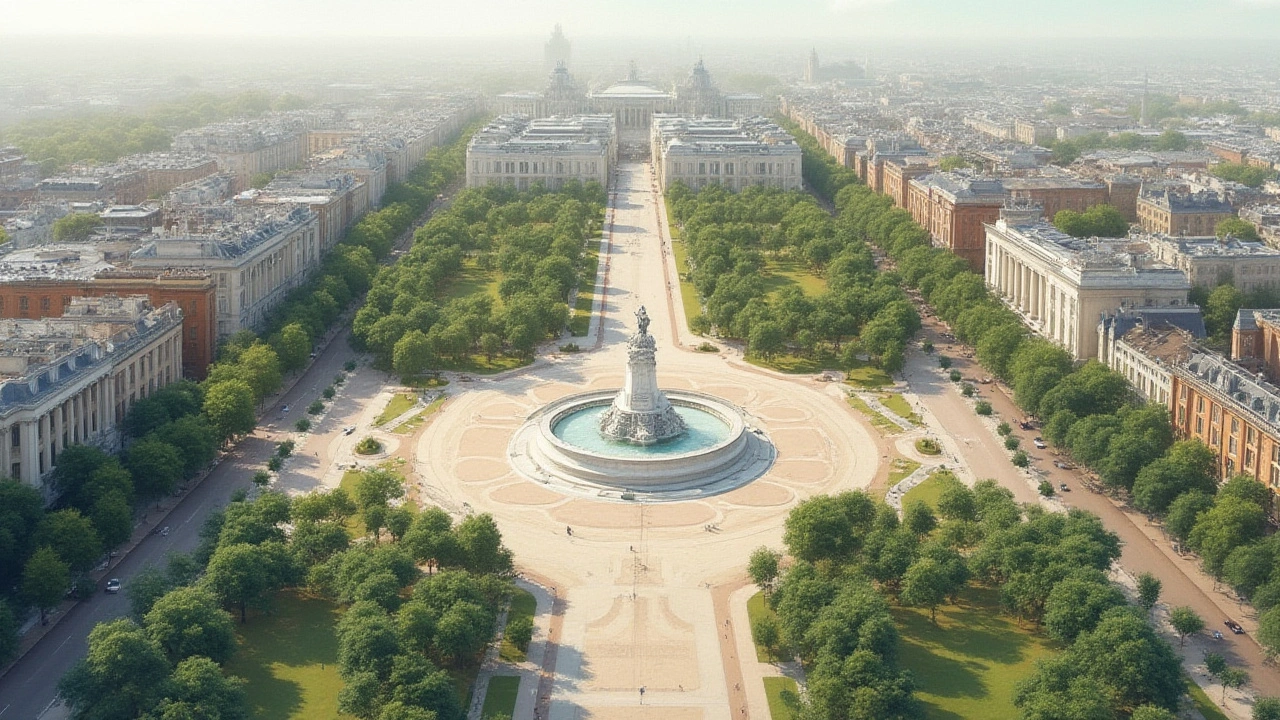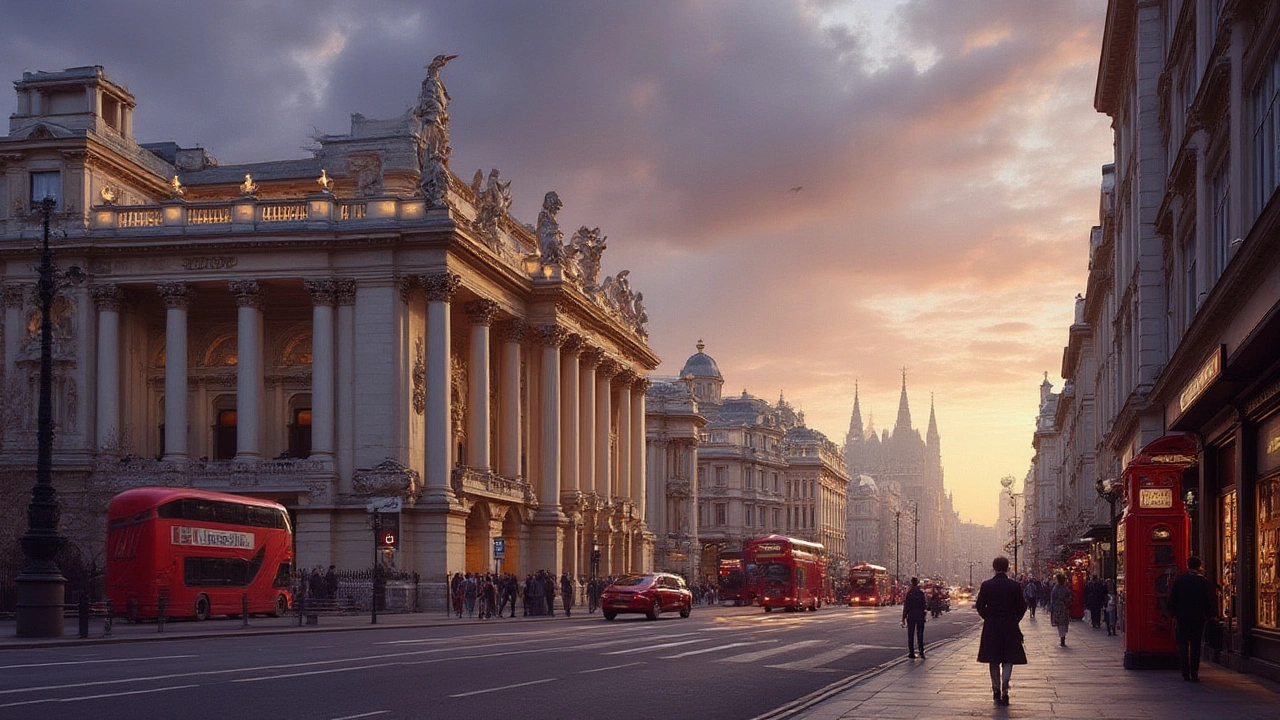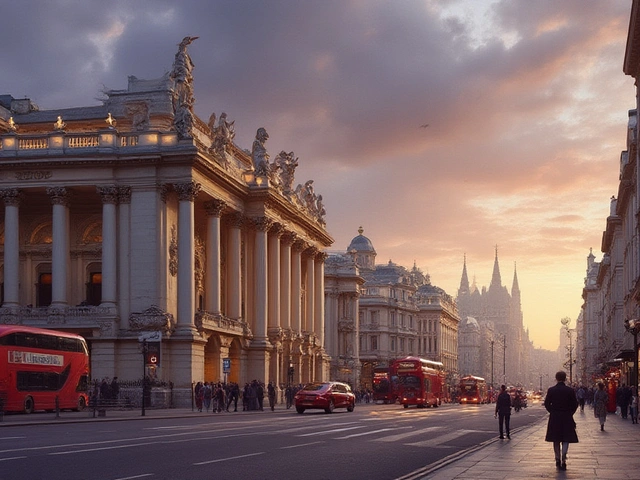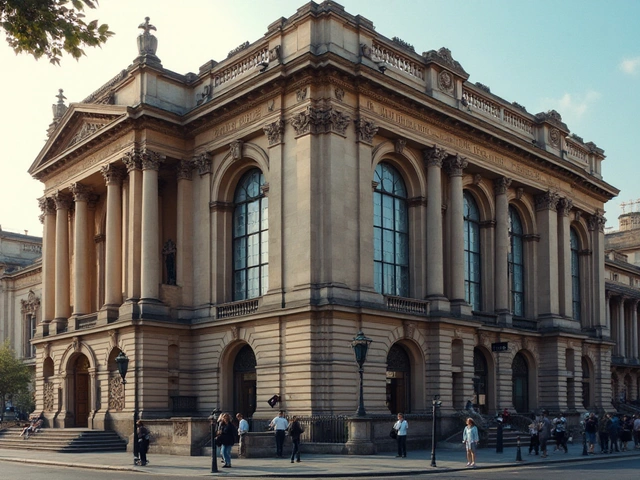Walk down the grand boulevards of Paris or even a main street in downtown Dallas, and you’ll notice a certain drama in the buildings—columns that seem to go on forever, facades thick with ornament, staircases curving like they belong in a palace. You might think you’re looking at a mishmash of old cultures, but much of what you’re seeing is Beaux-Arts architecture. Not just a style for fancy train stations and city halls, Beaux-Arts quietly rewired how cities organize space and how people interact with their urban worlds. Once you start spotting its signs, you realize just how much it shaped modern urban landscapes in ways most people miss until they stop and really look.
The Roots and Reach of Beaux-Arts Architecture
If you hear "Beaux-Arts" and think of Paris, you’re already halfway there. The term comes from the École des Beaux-Arts, a legendary art and architecture school in Paris. Starting back in the 19th century, the school became a kind of global influencer, pumping out designers who championed symmetry, classical details, and real drama. They believed that public buildings and spaces shouldn’t just serve a function; they should excite the senses and show off the powers of city leadership or national pride.
So how did a Parisian school’s ideas get injected into cities across the world? It happened because architects from the U.S. and beyond flocked to Paris for training. They came back buzzing with new ideas—blending Greek and Roman columns, Renaissance arches, and baroque touches with modern engineering (think steel and reinforced concrete). In the late 1800s and early 1900s, wave after wave of these architects hit big cities like New York, Chicago, Boston, San Francisco, and even Dallas, eager to leave their mark.
And wow, did they ever. The New York Public Library? Beaux-Arts. The San Francisco City Hall? Beaux-Arts again. Grand Central Terminal? Yep. All of these buildings shared epic stairways, gigantic domes, and room after room flooded with natural light—all laid out according to careful, often mathematical, rules. If you get the sense that some public buildings feel like indoor cathedrals, you’re seeing this very influence at work.
Europe didn’t escape the craze either. Budapest, Buenos Aires, and Montréal all got their own flavor of Beaux-Arts, each laced with local traditions. Sometimes you’ll spot grand promenades, fountains that belong in Versailles, or rows of trees perfectly aligned like the strings of a guitar. It created city spaces that encouraged huge gatherings or solitary walks, all within the same grand design.
And here’s a quirky fact: even Hollywood’s Golden Age owes some sparkle to Beaux-Arts. The set designers who shaped movies dreams came from the same Parisian foundation, giving movie palaces and film sets that theatrical, almost fairy-tale feeling.
Signature Features That Transform Cities
What exactly makes Beaux-Arts architecture so easy to spot? First, there’s the obsession with axis and symmetry. Picture the National Mall in Washington, D.C.—straight lines, mirrored wings, central focal points. Beaux-Arts loves an impressive central boulevard slicing through the cityscape. You’ll find those not just in Paris, but in Buenos Aires (think Avenida 9 de Julio) and even the layout of Chicago after the 1893 World’s Columbian Exposition, which they called the "White City."
Second, details matter—a lot. These buildings don’t just stand tall; they flex with carvings, sculptures, grand stairways, and domes that demand attention. Think sculptures of allegorical figures, shields, garlands, and lions. The decorations act as visual stories, marking a city’s power, values, or history (the façade of the Palais Garnier opera in Paris practically reads as a who’s-who of 19th-century culture).
Material choices also play a role. Architects used the best stuff they could find—marble, limestone, bronze, and even early uses of glass and steel hidden behind classic looks. That combo let them build structures bigger than anything people had seen before. Grand Central Terminal’s gigantic main concourse could only be built with new engineering, but it feels like an ancient basilica.
And don’t forget interiors! Wide-open halls, skylights flooding rooms with sun, high ceilings, and cascading staircases—these places weren’t designed to rush through. They wanted you to slow down, look up, and feel small in the best possible way. Even the floor tiles and window moldings reveal the care that went into every inch.
Want to spot Beaux-Arts in your town? Here’s a quick tip-list:
- Look for a pronounced symmetry—if one side has a window, you can bet there’s a matching one exactly opposite.
- Check for a dramatic entrance—giant doors, massive columns, broad steps.
- Peek up at the roofline for sculptures (cherubs, eagles, goddesses—nothing subtle).
- Scan for streets or plazas radiating out from a building.
Even if you’re not in a city with a famous example, keep an eye out at old post offices, courthouses, and sometimes even train stations—they often wore a dash of Beaux-Arts to signal their importance.

Transforming City Planning: Grand Visions and Everyday Life
Beaux-Arts didn’t just make buildings more stylish. It completely flipped how cities planned their most important spaces. Before the Beaux-Arts craze, cities often just grew as needed, with streets sprawling wherever the next row of houses popped up. The new approach was different: planners started thinking in axes, vistas, and ceremonial spaces. They built with a sense of drama that actively shaped how people behaved in public places.
Think about the City Beautiful Movement in the United States around the turn of the 20th century. Here, planners inspired by Beaux-Arts principles believed great cities needed organized boulevards, big parks, public art, and monumental buildings. Chicago’s lakefront got reshaped; Cleveland, Detroit, and St. Louis all mapped out civic centers meant to elevate the soul. For cities, this wasn’t just about style—it set the stakes of civic life. If you build a city to inspire its people, the theory went, you’d get citizens who felt inspired to improve themselves and their communities.
It’s also pretty wild how these ideas stick around. Plaza layouts, park axes, and building alignments you see today often trace right back to Beaux-Arts theory. Walk through a city’s downtown—even a new one—and you’ll often find wide straight streets framing important buildings, squares serving as gathering points, and careful tree plantings meant to guide visitors’ eyes where designers wanted. Even malls and airports sometimes borrow the logic, lining up central corridors with light-filled gathering spaces to promote order and ease of flow.
At the same time, the Beaux-Arts method had its critics. Some urban activists argued that all this monumental design squashed the voices and needs of smaller communities. It’s a real conversation. Does organizing a city this way encourage togetherness—a shared sense of place? Or does it risk making public spaces too sterile, too much like a stage set, forgetting the messiness of actual city life?
The balance is tricky. In Dallas, for example, the old courthouses and train stations hold onto their Beaux-Arts dignity, but new urban designs now lean more on blending public art, green spaces, and interactive corners alongside all that formality. The influence never really faded—it just learned to play with others, adapting spendor to changing tastes.
Legacy, Challenges, and Preservation of Beaux-Arts Urbanism
So what’s left of Beaux-Arts architecture’s influence in 2025? Quite a lot, if you know where to look. Many of those original buildings have become prized city treasures—tourist stops, Instagram hotspots, or the go-to filming site when a movie director needs "instant grandeur." The preservation movement around Beaux-Arts structures has been fierce. Take the battle to save New York’s Grand Central Terminal in the 1970s—a movement spearheaded by none other than Jackie Kennedy Onassis. Without it, one of the world’s most spectacular public spaces would’ve vanished under a nondescript office tower.
But it’s not always easy. These grand structures demand love and care. All those carved lions and delicate railings take work to keep looking sharp. Restoration is often expensive, with specialists working year-round to clean facades, reinforce staircases, and even recreate missing bits with 3D printing and other modern tech.
And here’s a real tip for modern architects and city planners: you don’t have to build a marble hall to use Beaux-Arts wisdom. It’s less about creating another palace, more about stealing the good ideas. Use symmetry to guide traffic. Place parks and plazas where views line up naturally. Embrace a little drama when there’s a chance (maybe a fountain at the end of a boulevard, or use of public art as a focal point). The best cities mix old and new, blending clarity and invention to stay relevant.
Fast fact: Cities like Washington, D.C. still legally protect their Beaux-Arts sightlines and vistas. Block a view of the Capitol, and you’re in real trouble with local authorities. That’s the power the style holds—even today’s skyscrapers know when to get out of the way.
If you’re traveling and love gorgeous buildings, map out the Beaux-Arts sites beforehand. They tend to be free, wheelchair accessible, and often put you right in the city’s busiest, most beautiful neighborhoods. Keep your eyes peeled for those oversized windows, symmetrical wings, and central domes—they’ll lead you to the stories each city wants to tell about itself.
So next time you’re walking under those grand arches or sitting beside a ripple-edged fountain in a city square, remember: it’s not just pretty for pretty’s sake. The Beaux-Arts architecture movement was a game-changer, and its echoes are still all around you—they’re just waiting for you to notice them.




